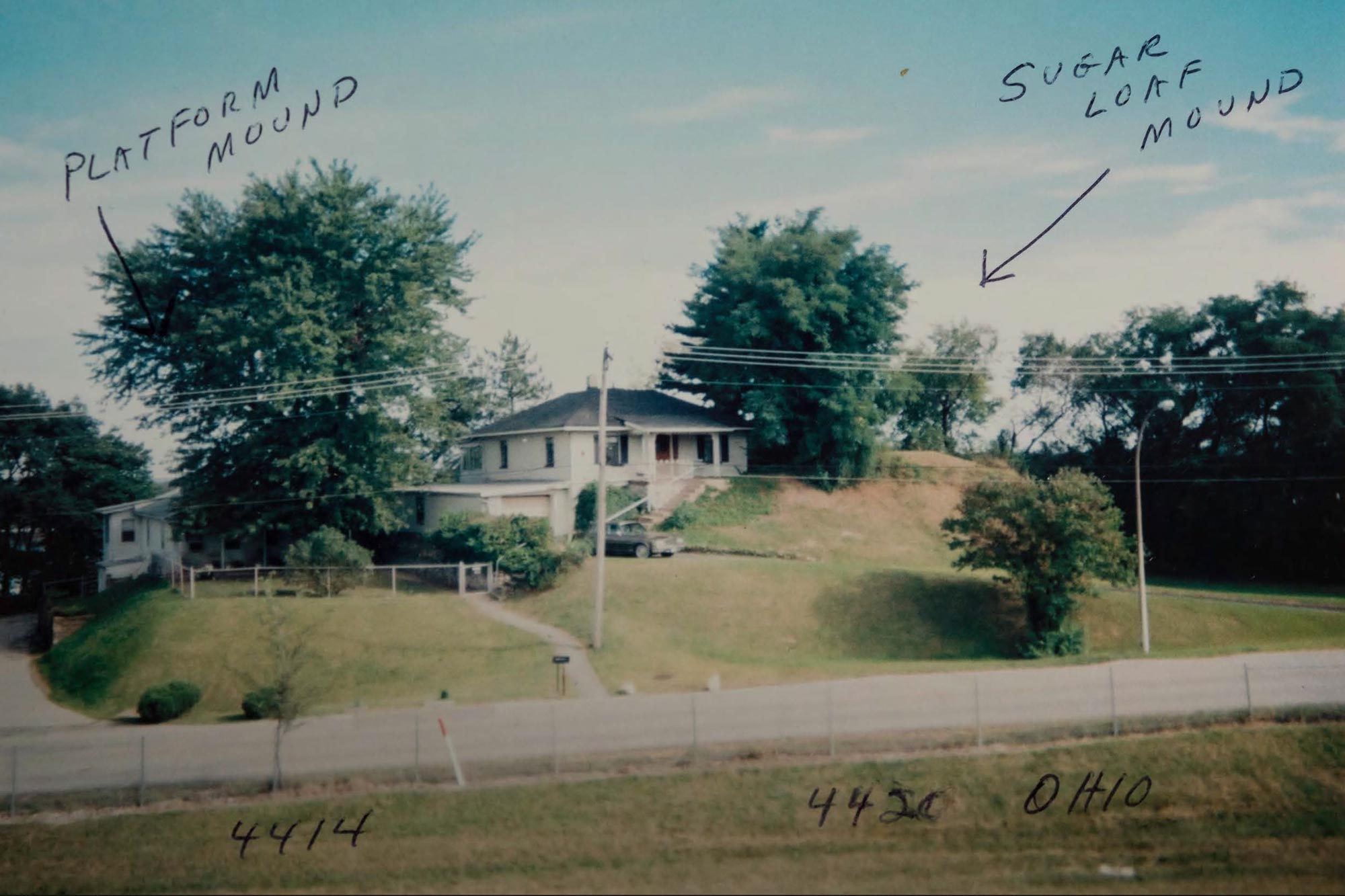
The Osage Nation has received the historic transfer of most of a sacred site called Sugarloaf Mound, set on the bluffs of the Mississippi River in St. Louis, with the help of the arts organization Counterpublic. For the first time, the city also acknowledged Osage Nation’s sovereignty over the site with a resolution from the St. Louis Board of Aldermen.
Sugarloaf Mound is the last intact mound made during the Mississippian period, the pre-Columbian era from around 800 C.E. to 1600 C.E. when Native American tribes in what is now the Midwestern region of the United States developed into hierarchal societies and started building earthen mounds for ceremonial, religious, and political purposes.
Counterpublic and the Osage Nation engaged in three years of heavy negotiations to rematriate the land, more than a decade after the tribe bought their first section of the mound and demolished a home that once stood on it.
Homeowner Joan Heckenberg stands in front of her house on Sugarloaf Mound in St. Louis. Photograph by Jennifer Colten/Counterpublic
Now, Joan Heckenberg, an 86-year-old resident who has lived atop the mound for more than eight decades, has agreed to transfer her home to the Osage Nation—leaving one last holdout, the St. Louis chapter of the national pharmaceutical fraternity Kappa Psi.
“In the immediate aftermath of this important announcement, we are excited to share that Kappa Psi has agreed to begin discussions for a sale or transfer of their property on the mound as well,” James McAnally, executive and artistic director of Counterpublic, revealed to Artnet News.
McAnally said that a lot of work remains to complete those negotiations, but Counterpublic and the Osage Nation are grateful that all current owners are now actively seeking a “meaningful resolution” that ends with Osage Nation being the sole owner of the site.
An undated photograph of Sugarloaf Mound without any homes on it, taken at least 80 years ago. Photo courtesy of Visitor Assembly
In prepared statements, McAnally added that he hopes the work done by Counterpublic can serve as a “replicable model for how art can connect with Land Back movements directly and seed lasting change.” And, he noted the Mellon Foundation’s role in the return of the land.
“Through collaborative partnerships and the good will of the previous owner, the Osage Nation comes another step closer to restoring this sacred site as it should be preserved,” added Andrea Hunter, director of the Osage Nation Historic Preservation Office.
In 2023, Osage Nation invited curator Risa Puleo and artist collective New Red Order to activate the mound with public programming for the first time with artworks responding to the site, including an installation by Osage artists Anita and Nokosee Fields.
An artwork by Anita and Nokosee Fields titled WayBack is pictured on Sugarloaf Mound. Photo by Chris Bauer/Counterpublic 2023
When the full mound has been restored, the Osage Nation plans to support its long-term preservation and the eventual construction of an Osage Interpretive Center, an educational space to teach about the tribe’s history and culture.
Alderwoman Cara Spencer, the local politician who sponsored the resolution acknowledging the Osage Nation’s sovereignty of the land, noted that Sugarloaf Mound is the oldest man-made structure in St. Louis, where mounds once abounded by the hundreds.
“The work the Osage Nation and Counterpublic are doing to preserve this mound represents our last chance to ensure this important part of our community’s past isn’t lost forever,” Spencer said.
Counterpublic noted that the gesture by the city was a welcome step towards inviting the Osage back to the region after they were forced from the land in the 1800s to reservations in Kansas and Oklahoma.